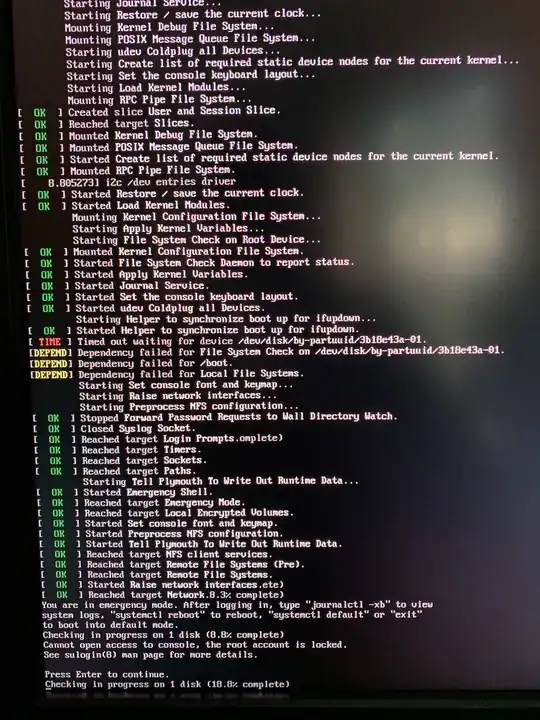I'm attempting to configure my raspberry pi 4 to boot from an external disk, and it works pretty well! I've configured it to boot from the partition ID I get from sudo blkid corresponding to my boot partition, and everything is dandy when I plug it in directly after flashing it with the image. I'm followed the instructions in this thread to great success:
https://www.raspberrypi.org/forums/viewtopic.php?t=105868
For clarity, I've done the following things recommended by this thread:
- Created an
initramfsand placed it on/boot - Updated my
/boot/cmdline.txtto specifyroot=PARTUUID=xyzfor the partition UUID - Updated `/etc/fstab' to specify the partition ID should be mounted as root.
However, things go off the rails when I attempt to resize the partition from its regular ~4gb size to its full 2TB glory. I boot into the SD card's root filesystem, open up gparted, and resize the root partition to extend to the full disk. Then I go to boot and I'm greeted with a message indicating mounting and resizing the root partition failed and my system is in emergency mode.
What gives? Is there a maximum size to the root partition?
UPDATE:
I've incorporated Ingo's suggestions: verified that the PARTUUID I specified in my /etc/fstab and my commandline flags is correct after the resize, as well as tested using /dev/sda2 as a target rather than the PARTUUID. This didn't resolve the issue.
Instead, I've disable quiet booting and observed a few things. First off, when I first boot into the freshly resized disk, I see the following:
What I think is happening here is that the fsck is timing out, and when I allow this to run its course I reboot and get something different. I get as far as this screen:
After which it flashes something that looks like a splash screen for a moment and then hangs. When I <Ctrl><Alt>-FX by way through the consoles, I find that 1 and 7 are black, and 2 through 6 show blinking cursors.
UPDATE 2:
This does not seem to be related to the size of the partition. I resized the partition from the old size to 1MB larger than the previous size, and it still had the same issue.

